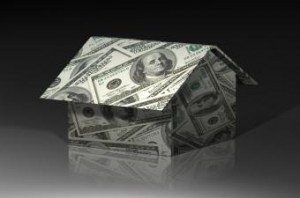 Even as home prices decline in 2023, a broader examination of trends over the past 20 years reveals a 162% increase in average home prices. That’s according to a new study by Clever Real Estate’s online publication Home Bay, which examined income growth in the U.S. since 2000 and compared that to increases in home prices throughout the same 20-plus years.
Even as home prices decline in 2023, a broader examination of trends over the past 20 years reveals a 162% increase in average home prices. That’s according to a new study by Clever Real Estate’s online publication Home Bay, which examined income growth in the U.S. since 2000 and compared that to increases in home prices throughout the same 20-plus years.
For many aspiring homeowners, what the researchers reveal is discouraging.
“The American Dream of homeownership is becoming even less attainable as home prices have risen exponentially faster than income over the past two decades,” writes Home Bay’s Jaime Dunaway-Seale.
The author explains that low interest rates and limited housing stock following the 2008 housing market crash helped fuel the market’s recovery and pushed home prices higher, “but wages failed to keep pace.”
Analysts at Home Bay found that home prices have increased more than twice as fast as typical incomes. Buying a home now costs more than five times the average American's annual salary.
The median-priced home in the U.S. is $433,100. But the typical American household earns $74,580, just 45% of the income it would need (about $166,600) to purchase that median-priced home.
Home Bay reports that the dissonance between income and home prices has caused the house-price-to-income ratio in America to greatly exceed what financial experts consider “healthy."
The average house-price-to-income ratio, 5.8 nationwide, is more than double the recommended ratio of 2.6, according to the report.
“In other words, buying a home should cost about 2.6 times what the average American makes in a year,” the author notes. “In reality, it costs 5.8 times the median household income, making homeownership an increasingly elusive dream for today’s buyers.”
Research showed none of America’s 50 most populated cities have a home-price-to-income ratio that’s equal to or below the recommended 2.6.
In the past year, the house-price-to-income ratio has decreased in some places, more often in affluent cities, including all 10 of America’s most expensive metros, they report.
The lowest home-price-to-income ratio is in Pittsburgh at 3.2, followed by Buffalo and Cleveland.
California has the least affordable neighborhoods. There, San Jose’s home-price-to-income ratio is 12.1, San Francisco’s is 10.4, and San Diego’s is 9.5.
Generations of Americans have struggled to afford homes, but elevated prices and limited stock in recent years have made it harder than ever.
In 1985, when the Baby Boomer generation was purchasing the most homes, the price-to-income ratio was 3.5. By the time Gen Xers were buying homes, in the early 2000s, It had increased to 3.9.
According to the study, millennial homebuyers have significantly higher hurdles to clear than previous generations, considering today’s 5.8 house-price-to-income ratio, which is 66% higher than it was in 1985 and 49% higher than it was in 2000.
Home Bay takes a deep dive into home price and income data by region. For the full report and methodology along with metro rankings, visit homebay.com.

 DSNews The homepage of the servicing industry
DSNews The homepage of the servicing industry









